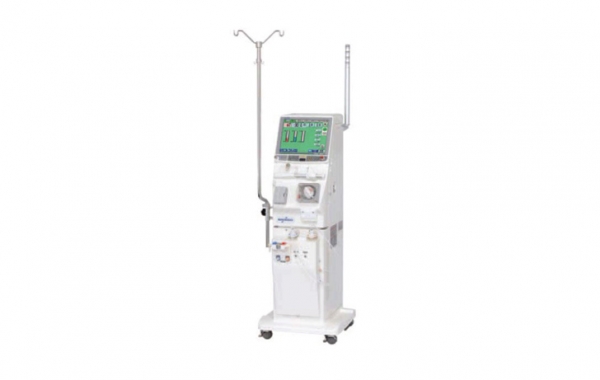The COVID-19 pandemic has made face masks an essential part of daily life, creating new challenges for people who use hearing aids. Masks can obstruct clear sound transmission, making it more difficult for individuals with hearing aids to hear and communicate effectively. However, with a few adjustments and strategies, you can use your Private Hearing Aids to achieve clearer sound while wearing a face mask. This article will guide you on how to overcome these challenges and improve your communication with hearing aids, even when face masks are necessary.
Why Face Masks Affect Hearing Aid Users
Face masks create both physical and auditory barriers for those who rely on hearing aids. Masks can muffle sound, reducing its clarity and intensity, which poses a particular problem for individuals with hearing loss. Additionally, masks obstruct visual cues like lip-reading and facial expressions, which hearing aid users often rely on to understand speech in noisy environments. Many hearing aids are worn behind the ear, so wearing a mask with elastic ear loops can cause discomfort or even risk dislodging the device.
These challenges have highlighted the need for practical solutions to help hearing aid users communicate clearly while staying safe. Below are some strategies to enhance hearing and comfort when using private hearing aids with face masks.
Tips for Using Hearing Aids with Face Masks
- Use Mask Designs That Avoid Ear Loops
Ear-loop masks can interfere with behind-the-ear hearing aids, making it easy for the devices to fall out when you put on or remove your mask. Opt for alternative mask designs, such as those with tie-back or adjustable straps that fasten around your head rather than your ears. This minimizes contact with your hearing aids and reduces the risk of accidentally dislodging them. - Consider Clear Masks for Visual Cues
Clear masks with a transparent panel around the mouth area allow others to see your lips, which can improve communication. Lip-reading and observing facial expressions are essential for many hearing aid users, as these visual cues help compensate for any muffling caused by the mask. Clear masks are available in various designs and can significantly aid in both understanding and being understood in social situations. - Check Hearing Aid Position Regularly
Masks can easily shift the placement of behind-the-ear hearing aids, which can impact both sound quality and comfort. Make it a habit to check your hearing aid’s position each time you put on or adjust your mask. Ensuring that the hearing aids are sitting correctly can prevent discomfort and keep sound transmission clear. Regular checks also help reduce the risk of accidentally losing or damaging your hearing aids while wearing a mask. - Activate Mask Mode on Hearing Aids
Some modern hearing aids have special settings or “mask modes” designed to improve sound clarity when listening to masked voices. This feature boosts specific frequencies and enhances the clarity of speech, helping users understand conversations more effectively. If your hearing aids have this feature, it can be easily activated through the device’s app. Consult with your audiologist or provider for help in setting up this mode.
Adjusting Hearing Aid Settings for Better Masked Communication
To optimize the performance of your hearing aids while wearing a mask, consider adjusting some settings. With the help of an audiologist, you can explore advanced features to improve clarity in conversations:
- Increase Volume and Adjust Frequency Settings
Masks can muffle sound, especially high-frequency sounds that are essential for speech clarity. Increasing the volume or adjusting the frequency settings on your hearing aids can make conversations clearer. Many hearing aids allow users to make these adjustments manually via a smartphone app or remote control. Experiment with different settings to find the ideal balance for hearing speech through masks without causing discomfort. - Use Directional Microphones for Focused Listening
Directional microphones focus on sounds coming from the front, helping to reduce background noise and improve clarity in conversations. This feature is particularly useful in noisy environments where mask-wearing makes it even harder to hear. Ask your audiologist to activate or optimize directional microphone settings on your hearing aids to enhance your experience in social or public settings. - Utilize Noise Reduction Features
In places with high background noise, noise reduction features can be a game-changer. These settings help isolate speech from environmental sounds, improving your ability to understand conversations while masked. If background noise makes it hard to communicate, noise reduction can make a significant difference in sound quality and clarity. - Schedule Regular Private Hearing Tests for Better Calibration
Regular private hearing tests are essential for ensuring your hearing aids are properly calibrated. Over time, your hearing needs may change, and it’s crucial to keep your hearing aids adjusted to your current requirements. Regular tests with a professional audiologist, like those offered at Almond Hearing, can help you fine-tune your device for optimal performance. Private Hearing Tests can also ensure that your device settings are optimized for unique challenges, such as wearing a face mask.
Using Technology and Accessories for Improved Communication
In addition to adjusting your hearing aid settings, various technologies and accessories can further enhance your listening experience. Here are some options to consider:
- Try Remote Microphone Accessories
Remote microphones are devices that can be placed close to a speaker, allowing sound to be transmitted directly to your hearing aids. This can be particularly helpful in situations where the speaker is masked and further away, such as in classrooms or meetings. Remote microphones enhance sound clarity and make it easier to understand masked speech, even from a distance. - Use Bluetooth Connectivity for Streaming
Many private hearing aids come with Bluetooth capabilities, allowing you to stream audio directly from your phone, computer, or other Bluetooth-enabled devices. In situations where you’re having a virtual meeting or phone conversation, Bluetooth streaming provides clear, direct sound to your hearing aids, bypassing any muffling effects from a mask. This feature can significantly improve sound quality in digital communication. - Look into Transcription Apps
Speech-to-text apps can provide a real-time transcription of spoken conversations, displaying text on your phone or tablet. These apps can be incredibly useful in situations where mask-wearing makes it challenging to understand someone. Popular apps like Otter.ai and Google Live Transcribe are reliable options, and they can be easily downloaded and used alongside your hearing aids for a smoother communication experience.
Benefits of Almond Hearing for Hearing Aid Users
If you’re looking for expert guidance on using your hearing aids with face masks, Almond Hearing provides comprehensive services to help you make the most of your devices. Their team of audiologists can assist with hearing aid adjustments, suggest suitable accessories, and provide professional advice for improving communication in challenging environments. Almond Hearing is committed to ensuring clients achieve the best sound quality, regardless of external challenges like face mask use.
Practical Tips for Everyday Communication with Masks
To make conversations easier while wearing a face mask, try these practical strategies:
- Position Yourself for Better Hearing
If possible, face the person speaking directly and reduce the distance between you. Standing or sitting in close proximity can help you pick up on their voice more clearly and minimize background noise. - Ask for Repetition or Clarification
If you’re struggling to understand someone, don’t hesitate to ask them to repeat themselves or rephrase what they said. You might also request that they speak more slowly or enunciate, which can significantly improve comprehension. - Use Visual Cues When Available
Pay attention to body language and other non-verbal cues that can provide additional context. While masks limit lip-reading, gestures and expressions still contribute to understanding the overall message. - Inform Others of Your Hearing Needs
If you’re in a conversation where you’re having difficulty hearing due to masks, let others know that you use hearing aids. Many people will be understanding and willing to adjust their speaking style to accommodate your needs.
Conclusion
Using private hearing aids with face masks can be challenging, but with the right strategies, settings, and tools, you can maintain clear communication. Adjusting settings, using accessories, and selecting the right type of mask can make a significant difference. Almond Hearing provides valuable resources and support, offering private hearing tests and professional advice to optimize your hearing aid settings for various environments, including mask-wearing situations. By taking proactive steps to adjust your hearing aids and using available technologies, you can enhance your listening experience and communicate effectively, even with a mask.



